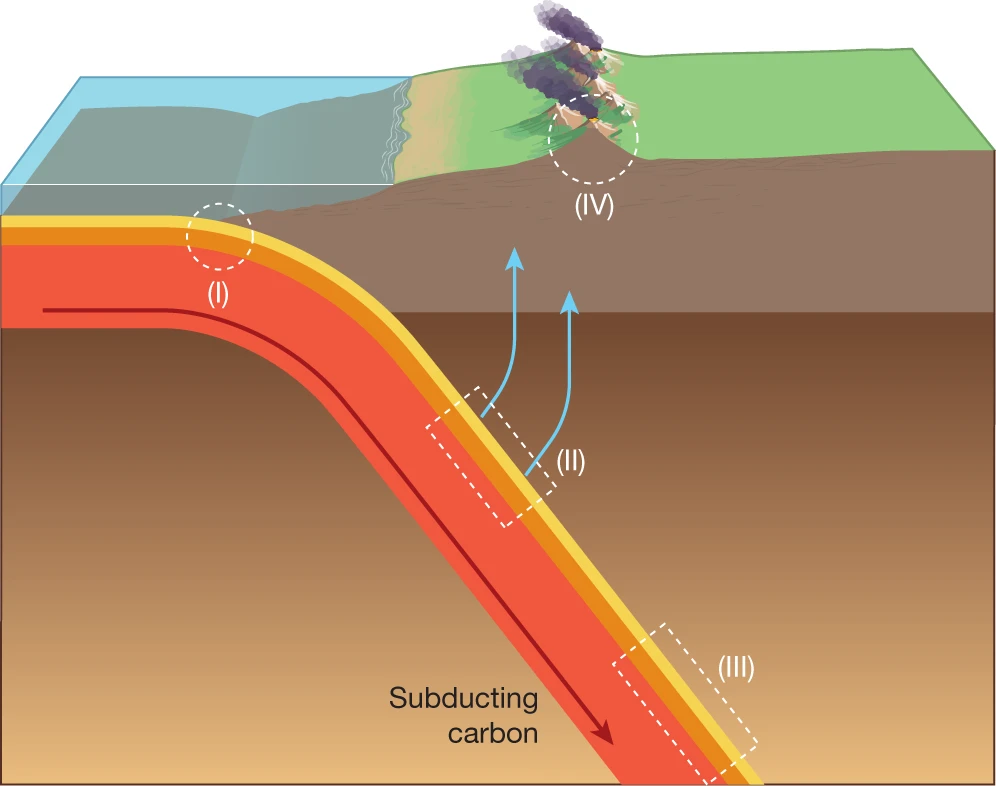Observing the unobservable: building numerical geodynamic models to trace carbon cycling in subduction zones
Tectonic plate motions carry megatons of carbon stored near Earth’s surface into Earth’s deep interior each year as altered oceanic lithosphere and seafloor sediments subduct at convergent margins (Figure 3). Estimating unobservable carbon fluxes between Earth’s surface and interior is critical for projecting current climate trends. In principle, carbon and helium isotope compositions of diamonds and volcanic gasses can proxy for carbon recycling efficiency—i.e. how much subducted carbon is returned to Earth’s surface—yet interpretations of isotopic data remain unclear and highly-uncertain (Plank & Manning, 2019).
As an alternative approach to estimating carbon recycling efficiency, my proposed work will apply ML methods to 1) identify recycled (and subducted) oceanic material in numerical geodynamic simulations of convergent margins (after Kerswell et al., 2023), and 2) assume a set of relevant rock types (after Smye & England, 2023) for computing carbon fluxes from devolatilization reactions occurring based on PT paths of simulated material. Comparing carbon recycling efficiency computed from forward numerical models to efficiency rates inferred from proxy datasets can refine interpretations of carbon fluxes among subduction zone settings worldwide. This approach allows rapid sensitivity tests on carbon recycling efficiency that can quickly inform current climate projection models. Coupling numerical geodynamic simulations with equilibrium-thermodynamic modeling will offer student support for contributing highly-impactful scientific data to global climate projections, and high-performance computing and ML training, which are highly-sought after skills in international job markets.

Figure: Schematic illustration of the deep carbon cycle within subduction zone settings. Organic and inorganic carbon bound within seafloor sediments and altered oceanic lithosphere (I) fluxes carbon from Earth’s surface to its deep interior. Some of the carbon is released through PT-dependent dehydration reactions (II) and fluxes back to Earth’s surface by volcanism (IV), while some carbon is stored in the deep mantle (potentially forming diamonds; III). From Plank & Manning (2019).
References
Kerswell, B. C., Kohn, M. J., & Gerya, T. V. (2023). Computing rates and distributions of rock recovery in subduction zones. Geochemistry, Geophysics, Geosystems, 24(5), e2022GC010834.
Plank, T., & Manning, C. E. (2019). Subducting carbon. Nature, 574(7778), 343–352.
Smye, A. J., & England, P. C. (2023). Metamorphism and deformation on subduction interfaces: 2. Petrological and tectonic implications. Geochemistry, Geophysics, Geosystems, 24(1), e2022GC010645.